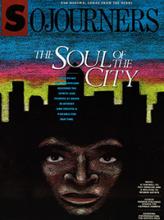There's something reassuring about the fact that the flag, the old Stars and Stripes, can still kick up so much popular controversy. It happened in 1984-85 when pop-phenom of the year Bruce Springsteen made the flag the visual centerpiece of his Born in the USA album and tour. It happened again last year, when the Bush/Atwater crowd pinned Michael Dukakis to the wall on the Pledge of Allegiance.
America's universal symbols are few and far between. And when you get down to it, most of them are commercial, like the Coca-Cola logo and the golden arches. So it's a little bit touching to see that people still have some sort of allegiance to a not-for-profit, unregistered, public domain trademark -- even if that allegiance does tend to function at the same level as the Coke vs. Pepsi brand loyalty.
And now, with this past summer's Supreme Court decision overturning flag desecration laws, and the Bush administration's subsequent attempts to revise the First Amendment, the flag as sound-bite fodder is most certainly back. And I, like Michael Dukakis before me, would just as soon not discuss the issue on the terms circumstances have dictated.
I dare say that for most Americans who, as Arlo Guthrie once said, are "trying to stop war and stuff," flag-burners are an embarrassment. I know the First Amendment arguments for defending flag-burners. I agree with them. They're right. But it still rubs me the wrong way to have to defend the practice.
By disposition and political judgment, I'm inclined to favor a "recapture-the-flag" strategy toward the symbols of American patriotism. I tend to think that Bruce Springsteen played the flag game pretty well. He put Old Glory forward as an open-ended assertion, without embroidery or comment, and then proceeded to heap hot coals of ambivalence upon the initial "the pride is back" responses.
Read the Full Article

